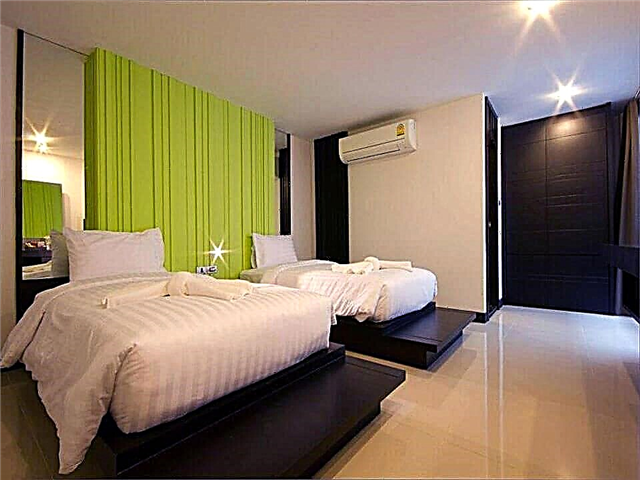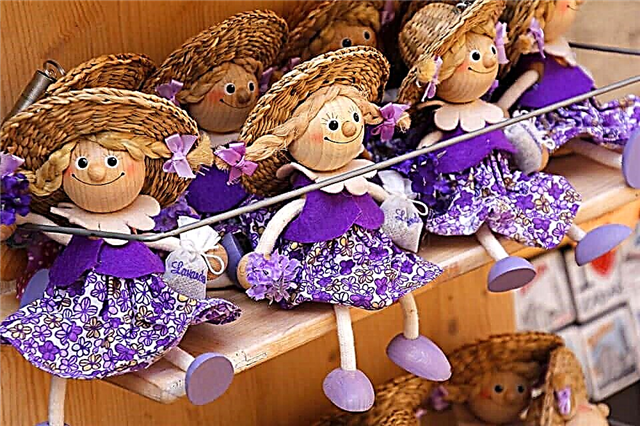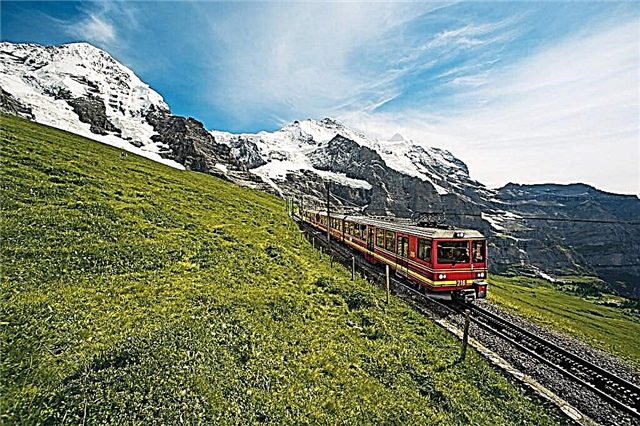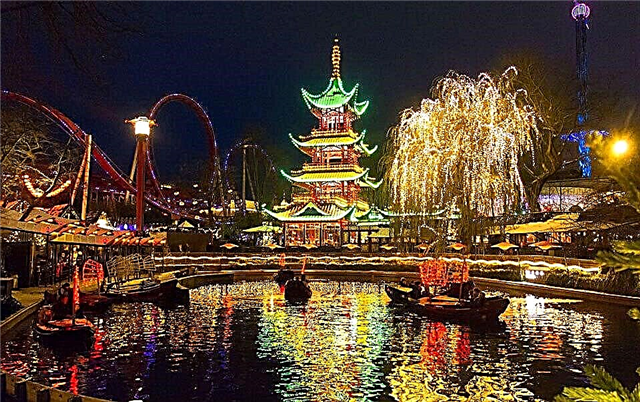Denmark is a small fabulous country in the south of Scandinavia. Many great people grew up on this land among cute colored houses, luxurious castles and ships. Its traditions and architecture have remained largely unchanged. Its capital is a clean, calm European city that can be traveled far and wide by bike or on foot. This is one of the most interesting tourist destinations. Rich historical past, hospitality, special flavor - all this attracts thousands of travelers. A short guide to Copenhagen attractions will allow tourists to see the most interesting places in this beautiful city.
Amalienborg palace

Amalienborg is the heart of Denmark, its political center and the main attraction of the city. More than 2 centuries ago, this place became the official residence of the royal family. The architectural complex consists of 4 very similar to each other, detached palaces, designed in the Rococo style. A sculpture depicting Frederick V is installed in the center of the square. It is considered one of the finest equestrian statues in the world.
Most travelers head to the square by 11.30 to watch the changing of the royal guard. The most solemn ceremony can be seen when Queen Margrethe II is in the palace. Then the guardsmen march with the flag, accompanied by the orchestra. To music, but without a banner, the guard is replaced if the king, prince or crown prince is in the residence. The most common procession takes place when the palace is empty.
Amalienborg is open to visitors. The spacious halls display elements of furniture, clothing, and various utensils that at various times belonged to the royal persons and their families. From May to November, the museum is open from 10.00 to 16.00, in the remaining period - from 11.00. Day off: Monday.
Entrance fee: 95 CZK for adults, 65 CZK for students, free for children.
From any part of the city, you can get to Amalienborg Square by bus no. 1A, 15, 26, 83N or 85N.
Address: Amalienborg Slotsplads, 6.
Christianborg palace

The majestic and tranquil Kristianborg Palace, built of granite, is located on the island of Slotsholmen. This piece of land is surrounded by canals and is connected to the city by 8 bridges. The historical and architectural monument has a difficult history of fires, destruction and repeated restoration. For 8 centuries, the palace was the residence of monarchs, now it houses the Danish parliament. The construction of Copenhagen began from this island. Here is the Absalon castle, from which now only 800-year-old ruins remain. It is named after the bishop - the founder of the city.
The external austerity and splendor of the castle are continued in the interior decoration. The ceiling of the Throne Room is painted in an amazing way. The Great Hall impresses with its size and tapestries depicting historical subjects. The palace houses the Royal Library, which is rich in the rarest copies of books and manuscripts. Particular attention is paid to the balcony, on which the Danish queen comes out to communicate with her people.
A tour of the palace chambers from May to September runs daily from 9.30 am to 3.30 pm. In the rest of the period, you can get to the palace on Tuesday, Thursday, Friday and Sunday.
You can get to the island by buses No. 1, 2, 5, 10.
Thorvaldsen Museum

Not far from Christianborg, there is a wonderful museum of the famous Danish sculptor Bertel Thorvaldsen. It is he who is the author of the monuments to N. Copernicus in Warsaw, D. Byron in Cambridge and many other sculptures located in different parts of the world. The low-rise square building is made in the neoclassical style and was built during the lifetime of the creator. It was originally intended to store Thorvaldsen's huge collection, and after his death it became a mausoleum. On the first floor, the sculptor's works and his personal belongings are exhibited, on the second, there are many paintings, books, musical instruments and other antiques. In total, the exposition has more than 20 thousand exhibits.
The museum constantly hosts various cultural events, periodically at night. Those who are keen on art can attend graphic and painting classes. The museum staff offer a free English-language audio guide.
Working hours: from 10.00 to 17.00. Day off: Monday. Ticket price: 50 CZK. Admission for visitors under 18 is free. On Wednesdays, admission is free for everyone.
You can get to the museum by bus number 1A, 2A, 15, 26, 29 to the Borsen stop. Kongens Nytorv and Noerreport Metro Stations are nearby.
Address: Bertel Thorvaldsens Plads, 2.
Royal Library of Denmark
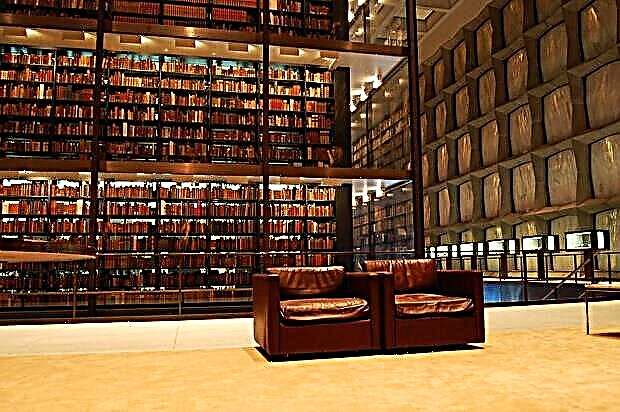
A wide layer of cultural and scientific heritage of Denmark is kept in the national library. Her book fund is considered one of the largest in the world. It includes the oldest manuscripts included in the UNESCO heritage list and copies of the latest books, brochures, newspapers and magazines published in Danish. The Royal Library will be interesting not only for book lovers. The library complex covers 3 buildings of the University of Copenhagen and the main building on the island of Slotsholmen. This repository is the ultimate expression of contemporary architecture craftsmanship.
On the bank of the canal rises an asymmetric structure made of glass and dark granite, called "Black Diamond". In the evening, when the light comes on in the panoramic windows, the book depository changes its shape, it becomes warmer and more comfortable. A wide staircase leads to the roof of the building, from where a breathtaking view of the port opens. Inside the library is equipped with reading rooms, several electronic catalogs and collections of various video materials, exhibition and conference rooms. It often hosts public events, scientists and cultural workers read their lectures.
Working hours: from 8.00 to 20.00. Day off: Sunday.
The nearest metro station Islands Brygge st. Take bus 9A to the Det Kongelige Bibliotek stop.
Address: Soren Kierkegaards Plads, 1.
Town hall

The City Hall is one of the favorite tourist attractions. The building was built in 1905 of red brick in the Art Nouveau style. Its architect, Martin Nairop, strove to fit the new building into the overall style of the city. A gilded figure of Bishop Absalon is installed in the center of the façade above the main entrance. The tower with chimes reaches 106 meters, which is a lot for the Danish capital. If you climb the spiral staircase, overcoming 3 hundred steps, you can admire the mesmerizing city view.
It is quite cozy inside the town hall. Various excursions, exhibitions and even wedding ceremonies are held here. On the lower floor, in a separate room, there is an astronomical clock, consisting of 15 thousand parts. They can be considered one of the most accurate chronometers in the world. A huge dial under a glass dome shows the time exactly to the second, the date and day of the week, the location of the heavenly bodies and even Christian holidays.
The Town Hall is open from 10.00 to 15.00 on weekdays, until 12.00 on Saturdays. Day off: Sunday. During some events, attendance may be restricted.
The entrance to the building is free. Those who want to look at the astronomical clock and climb the tower will need to pay DKK 30. The attraction is located in the city center. You can get to it by buses No. 10, 12, 26, 33.
Address: Radhuspladsen, 1.
State Museum of Arts

Home museum of fine arts in the country. It is located in the central part, in the cozy and picturesque Ostre - Anlag park, lushly planted with flowers. The expositions are dedicated to the artists of Denmark. They include works by Picasso, Henri Matisse, Eckersberg, Kobke.The museum collection also has a lot of paintings by world famous creators: Rubens, Titian, Lemmerz and others. All works of art are arranged in chronological order: the canvases of the classics are in the old building, the paintings of their contemporaries are in the newer building.
The museum will also be of interest to the youngest visitors. In the Children's Museum, all exhibits are located at the level of the eyes of the child. It also hosts drawing and sculpting workshops where kids can learn art and pottery.
Opening hours: from 11.00 to 17.00, on Wednesdays - until 20.00. Day off: Monday.
Address: Solvgade, 48-50.
Tivoli park

Tivoli is a fairy tale for children and adults! In the central part of the Danish capital, on 8 hectares of land, there is a fascinating amusement park with green alleys, a lake and live fish, cafes and shops, a theater and a concert venue. From the moment of its opening to the present, the park has been constantly developing within its traditions. Now the entertainment center has more than 20 rides, including the world famous roller coasters Roller Coaster and Demon. In the evening, the park is transformed by the light of multi-colored lamps. At this time, it is worth having dinner at one of the restaurants: they are so good that they are constantly included in the lists of the best establishments in the city. You can stroll through the souvenir shops and drink freshly brewed mulled wine or beer.
The entertainment center is open 5 months a year: from May to September from 11.00 to 00.00. On Halloween and Christmas, it is decorated themed and invites visitors to have fun. All kinds of events are constantly held in the concert hall. More information about them can be found on the official website tivoli.dk.

The entrance fee to the park is 110 CZK. Amusement rides are charged separately. Various subscriptions are available for sale. Some slides and merry-go-rounds have restrictions on the child's height. Tivoli is located opposite the Kobenhavn H train station. You can get there by buses 1A, 2A, 5A, 9A, 11A, 40, 66, 250S, 866.
Ripley Museum "Believe It or Not!"

"If you want - believe, if you want - don't believe!" - this is the literal translation of the name of the Ripley Museum. It contains amazing objects, stories about unusual people and events from all over the world. Here you can not only look at all sorts of phenomena and learn entertaining and, in fact, useless facts, but also have fun. Visitors are scared in the fear room, invited to sit on the throne of love and even measure the level of "love radiation". The rides will delight both adults and youngest travelers.
Exposition "Believe It or Not!" Is one of several similar collections around the world. It was started by the American journalist and artist Robert Ripley. In the Danish capital, this institution is combined with the Guinness Museum of Records and the World of H.H. Andersen.
The Ripley Museum is open from mid-June to the end of August daily from 9.30 am to 10 pm. The rest of the time it is open from Sunday to Thursday from 9.30 am to 6 pm; on Friday and Saturday - until 20.00. Tickets stop selling one hour before closing time.
Entrance fee: DKK 90, CZK 50 for children under 12 years old. Attractions are paid separately. A single ticket to other Ripley museums will cost less.
You can get there by public transport by bus lines No. 95N, 96N to the station Lurblaeserne.
Address: Radhuspladsen, 57.
The world of Hans Christian Andersen

In Denmark, G.H. Andersen is revered in the same way as in Russia they love A.S. Pushkin and his fairy tales. There are many attractions here, one way or another connected with the writer and his work. The World of Hans Christian Andersen is a museum located in the house of the storyteller. Children will be delighted with him, they will be able to get to know the heroes of the good old and everyone's favorite fairy tales. Adults will not get bored either, because the expositions are not the usual exhibitions of objects resting on the shelves, but fascinating animations and attractions.
Visitors to the museum are greeted by the writer himself, not alive, of course, but his monument. Inside, a three-dimensional animation of the storyteller is working in his office. Famous heroes of fairy tales are presented in the form of drawings, cartoons, sculptures and three-dimensional moving figures. The interactive part of the exhibition is able to bewitch and transfer to the fantasy world for the whole day.
The Storyteller's Museum is open during the summer from 10.00 to 22.00. The rest of the time the working hours are as follows: from Sunday to Thursday from 10.00 to 18.00; on Friday and Saturday from 10.00 to 20.00. Ticket sales close one hour before closing time. Entrance fee: 60 DKK for adults, 40 DKK for children under 12 years old. The writer's "world" is located at the same address as the Ripley Museum.
The little Mermaid

The Little Mermaid Monument is a tribute to the great children's writer G.H. Andersen and the famous symbol of magical Denmark. A graceful and pensive girl sits on a granite stone and meets ships entering the port. Travelers come to the Langelinier embankment to take pictures with the sea beauty and make a cherished wish. The figure of the Little Mermaid, sitting near the water, symbolizes Denmark as the birthplace of an outstanding storyteller and as a country completely located on the islands. The statue was donated to the city by the owner of the Carlsberg factory and philanthropist Carl Jacobsen in 1913. He was fond of art and was impressed by the ballet, staged based on the fairy tale of the same name by G.H. Andersen. The role of the model was performed by the prima ballet troupe at the Royal Theater.
The sculpture of the inhabitant of the seabed in 2010 was presented to the world community at an exhibition in Shanghai. At this time in Copenhagen it was replaced by a video installation. The Little Mermaid was repeatedly vandalized. Each time it was restored from a cast left by the sculptor. The location of the statue can be reached by city or suburban train from the Noerreport station and get off at the OEsterport stop. The Langelinie promenade can be reached on foot. There are signs to the landmark with the words "Lille Havfrue".
Address: Langelinie, 19.
Christiania

Christiania is a state within a state, or an easy way to get into 1969. A small area with the main street, Pusher Street, is located near the center of the capital. Houses and fences form its border. About a thousand "free" people live in Christiania. Cars, theft, hard drugs, firearms and body armor are prohibited on this territory. In addition, you cannot take pictures here and it is undesirable to run, so as not to cause panic among the residents of the area. People here are actively fighting tobacco smoking.
There are shops, bars and eateries here. Concerts are periodically held in institutions, gathering people from different parts of the city at the venues. The area of the "free" population is quiet, clean and calm. Residents pay a small utility fee, from which the local government pays electricity and other taxes to the city government. The entire area is direct evidence of the possibility of a utopia. On its territory, people live according to simple laws, without crime and civil strife. They fenced themselves off from the outside world without using violence, gradually defending the authorities' right to autonomous control.
Islands Brygge Beach

Travelers do not associate Scandinavian countries with a beach holiday. However, when going to Denmark in the summer, do not forget to take a swimsuit with you, because you can sunbathe and swim even while staying in Copenhagen. There are 4 special zones in the city territory. The newest of them is Coral Baths. She is located at the Teglholmshavnen station. The cleanest blue flag beach Amager Strandpark is located in the Amager Strandvej area. Swimming is permitted here throughout the summer. The Fisketorvet harbor basin was nicknamed Copencabana by the Danes. It can be found at Kalvebod Brygge 55, near the shopping center of the same name.
Islands Brygge is considered the most visited recreation area.It is worth taking a look here already because urban beaches in Europe are very different from those found in Russia. The Islands Brygge bath is cozy and picturesquely located on the Amager island on the shores of the Øresund Strait. At the disposal of vacationers 5 swimming pools: 2 of them for children, 1 - for diving from a springboard. In addition to water treatments and sunbathing, vacationers enjoy drinks from local bars and homemade barbecue.
The entrance to the beach is free. It is open from June 1st to September 30th. Opening hours: Monday to Friday from 7.00 to 19.00.
Address: Islands Brygge, 7.
Round Tower

Everyone who has read Andersen's fairy tale "Flint" has heard about the Round Tower. The witch, telling the brave soldier about the largest dog, mentions that her eyes are the size of the Round Tower. This monumental structure was built in 1642. The order was given by King Christian IV. Outwardly, the tower looks like a military stronghold, but in fact, it was originally conceived as an observatory that the university needed. In those days, the famous astronomer Tycho Brahe was the real star of the educational institution.
In the Round Tower, he and his students conducted observations of celestial bodies and carried out work on methods for determining the exact coordinates in the ocean. For the construction of the foundation, stones were taken from the fortress wall that surrounded the city. The special high quality bricks were purchased from the Netherlands. The height of the building is 36 meters. The internal structure of the Round Tower is interesting. At the very top is the planetarium, to which a 120-meter spiral ramp leads.
There are no steps, this was done so that horse-drawn carts could easily climb up. There is a legend saying that in 1716 Peter the Great ascended to the upper tier in a gig. At the beginning of the 20th century, for the first time such an ascent was carried out by car. Now, in addition to the amateur observatory, the Round Tower is an excellent observation deck from which an amazing view of the city opens. The building serves as an arena for cycling races every year. The prize is taken by the participant who rode up and back faster, and never fell.
New Carlsberg Glyptotek

This famous art museum was founded by the son of the Carlsberg brewer, Karl Jacobsen. Throughout his life, he enthusiastically collected masterpieces of art, and in 1888 made a generous gift to the Danish people - his unique collection, which became the core of the exhibition. Transferring an invaluable gift to the city, he set a condition - the government should provide an exhibition building. The gift was so special that the authorities announced a competition for the best project, which resulted in the construction of the Glyptotek.
A visit to the exposition is a real treat for art lovers. Ancient masterpieces from Rome, Greece and Egypt, a colossal collection of Etruscan statues and bas-reliefs, an amazing French collection - works by Rodin, Degas, Pizarro, Cézanne, Renoir, Toulouse-Lautrec, Van Gogh ... More than 10 thousand different objects are presented by the Glyptotek to its visitors. There is also a concert hall in the building, where lectures, conferences, concerts of classical music are held.
Fountain Gefion

Another attraction that the city owes to the Carlsberg family. The brewery donated the fountain to Copenhagen to commemorate its 50th anniversary. The well-known artist Andreas Bungaard worked on the artistic composition. For two years he came up with and created the central figures, completing this work in 1899. For another 9 years, the fountain itself and the pool around it were under construction. Finally, in 1908, Gefion was solemnly turned on, which was the reason for a grand celebration.
There is a beautiful legend that is displayed in the composition. The Scandinavian goddess of fertility Gefion was an avid traveler. Having visited Sweden, she enthusiastically described her impressions to King Gulfi. Tom liked her story so much that he promised to give Gefion the land, but set one condition. The goddess can take as much land as her bulls plow in one night.
The resourceful Gefion turned her own sons into bulls and set to work. At some point, she strongly whipped them on their backs, the bulls rushed, and a large piece of land came off Sweden. Gefion named it Zeeland. In the place where it was before, the huge Lake Venern spilled. Denmark appeared on this piece of land. The fountain is especially good in the evening, when the lights are turned on and the melodic murmur of water fills everything around.
Fortress Kastellet

Once upon a time in the place where the fortress now stands, there was an old redoubt. It was built in 1626. After some time, the city was besieged by Swedish troops. After the blockade was lifted, the redoubt was badly damaged, and it was decided to restore and increase the fortification. From that moment on, the construction of the Frederikshavn Citadel began, but this name did not catch on, and the fortress began to be called "Kastellet".
The shape of the citadel is interesting - a regular five-pointed star. At the corners were bastions reinforced with artillery. Now practically nothing has survived from the massive stone structures, but the ramparts and cannons on them have survived. This form is not a tribute to beauty. When firing, the nuclei do not hit directly into the wall, but tangentially, which means they cannot cause much damage.
Now the fortress is under the jurisdiction of the military department, so access is not possible everywhere. Soldiers live in the barracks, and the entrance is guarded by guards. But the area around the barracks is a favorite resting place for the townspeople. Here you can walk slowly, indulging in reflections, or you can jog in the morning.
Rosenborg Castle

The most beautiful castle in Denmark embodies royal grandeur in all its appearance. Built in the Renaissance style and surrounded by a magnificent garden, it is rightfully considered the pride of the Danish capital. By the way, Hans Christian Andersen liked to walk in the garden. It is possible that it was there that he drew his inspiration. The history of the castle dates back to 1606. The representative of the Oldenburg dynasty, Christian IV, wished to equip his own home. To this end, he acquired 40 hectares of land outside the city. The amazingly beautiful residence has been under construction for 28 years.
Now a museum is open at Rosenborg Castle. An interesting detail - the exposition was designed in chronological order, so that you can personally trace how interiors, style and fashion have changed over time. The basement houses an amazing royal treasury. Visitors can admire crowns, insignia, jewelry and weapons. Among the exhibits there is even a Coronation Carpet. A visit to the city would be incomplete without seeing this attraction.
Zoo

The history of the zoo dates back to 1859. It was then that Nils Kyarbilling opened the first menagerie. In 1901, he became famous all over the world thanks to a unique exposition - visitors could observe the life of exotic peoples: Indians, Bushmen, Eskimos, Kyrgyz whole families lived in special enclosures.
The zoo now boasts rare animals such as the Far Eastern leopard and the Amur tiger. Now it is the only menagerie in the world that contains the Tasmanian devil (not counting, of course, Australia). A visit to the Arctic Circle is also of interest. This is a huge aquarium with a pedestrian tunnel. Thus, you can observe the behavior of polar bears in the water.
National Museum of Denmark

At the Frederiksholm canal there is a beautiful Rococo building - Prince Palace. Once it belonged to Crown Prince Frederick V, now it is a huge museum. The exhibits located there cover a large historical period - 14 millennia, from ice age hunters to medieval art objects.
Among the most interesting exhibits are the oldest Danish coin, the Chariot of the Sun, Victorian interiors, a hashish merchant's counter and even a mini-skirt that belonged to a girl who lived in 1370. In addition to the permanent exhibition, temporary exhibitions are often held.
Opera theatre

This landmark cannot boast of the dust of centuries and the charm of antiquity. The theater was opened to the public quite recently, in 2005. Placido Domingo came out to greet him. How did he earn the title of a must-visit place for tourists? There are several reasons for this. This is the most expensive theater in the world. Over 500 million US dollars were spent on its construction. The colossal building in the center is eye-catching and not surprising.
The total area is about 40 thousand square meters. The theater has 14 floors, five of which are underground. Inside, the building is finished with Sicilian marble, gold leaf and calcite. The furniture is made of white maple, and the floor in the main hall is covered with oak paneled. The upper tier is reserved for a restaurant, a visit to which allows you to admire the view of the Amalienborg Palace. The opera is definitely worth seeing from the outside at least.
Frederick's Church

Not far from the winter residence of the royal family - Amalienborg - Frederick's Lutheran Church (its other name is the Marble Church), built in a monumental Baroque style, flaunts. It is one of the five largest churches in Copenhagen. The uniqueness of the structure is given by a huge dome, 31 meters in diameter. It is the largest dome in all of Scandinavia, it rests on 12 columns and is visible from different points in the city.
The Danish architect Nikolai Eitved, who designed this temple, was inspired by St. Paul's Cathedral in Rome and wanted to build a Danish version of this masterpiece. The first stone was laid in 1749. By tradition, this was done by King Frederick V. But then the treasury significantly reduced the budget for construction, and the process stopped. The death of the architect further delayed the completion of the work on the temple. It took almost 150 years before the cathedral was consecrated.
The walls of the cathedral are decorated with numerous bas-reliefs and statues. Inside, visitors are struck by the rich decor, the altar, sparkling with gilding, and the benches decorated with intricate carvings. Stained glass windows add a special touch to the interior decoration. This cathedral is very popular among newlyweds. Every Friday wedding bells ring out far around. There is an observation deck directly under the dome, from which anyone can admire the views of the city.
Church of Christ the Savior

This old church of the 17th century is one of those buildings that will forever remain in the memory of tourists, a kind of visiting card of the city, recognizable and popular. This Protestant temple was built in the Baroque style according to the designs of Lambert von Haven. The main room is complemented by a bell tower. Its uniqueness lies in the fact that an external spiral staircase with 400 steps leads upstairs. The temple itself was consecrated in 1696, and the bell tower was completed only in 1750.
The spiral staircase is a symbol of humility and humility of a person. Interestingly, it is directed counterclockwise. There is a legend that says that the king of Denmark did not approve of this idea. The distressed architect climbed to the very top and threw himself from the tower. Of course, this is just a legend, he died after the consecration of the church in 1757. The interior decoration of the church is unusually magnificent and solemn. The marble altar, skillfully covered with gilding, carved columns, a large organ, a carillon with 48 bells - all this demonstrates the greatness of divine power.
Boersen

In the old part of the city, there is a small island called Slotsholmen with an area of only 21 hectares. As soon as the government was established in the country, the authorities chose this place. There are many interesting things for a tourist here. One of the buildings that deserves attention is the Börsen stock exchange. It was built in the Flemish Renaissance style. Various goods were stored on the first floor, and auctions were held on the second.
The construction of the exchange began in 1619, the authors of the project were the Stenwinkeli brothers. Construction went on for 21 years. The building is crowned with a unique spire. Its length is 56 meters, and the composition consists of four dragons with their tails entwined. The fabulous creatures are the symbol of the union of Norway, Sweden and Denmark. The stock exchange was located here until 1974. Cultural events and receptions are now held in the historic premises.
Experimentarium

Arriving with children, be sure to plan a visit to the Experimentarium. This is an unusual museum dedicated to science and technology. More than 300 exhibits will interest young researchers, especially since any of them can be picked up, viewed, or touched as you like.
In addition to the exposition, the Experimentarium is famous for its interactive programs. You can try a lie detector in action, create a tornado or geyser, shout into an echo tube, make a real cloud. A play area is provided for the youngest visitors, while parents can enjoy coffee with excellent Danish pastries in the cafe. By attending the Experimentarium, children discover an interest in science and a passion for learning.
Grundtvig Church

This building is a vivid example of the unique Scandinavian architecture. The church has a double impression on the viewer - with a gloomy overwhelming facade and a bright, joyful interior. The construction of the famous Lutheran church began in 1921. The construction was carried out exclusively with money collected by the people. The state did not take part in this. The church was opened to parishioners in 1940. The temple looks very unusual due to the combination of different styles - Gothic, Impressionist and Modernist.
The construction technology also deserves attention. Each brick is handmade. By the way, there are about 6 million of them. When laying the bricks, they were fitted as closely as possible to each other, as a result, almost monolithic walls were obtained. Dwelling houses were erected nearby, in which workers lived. All buildings are a single complex.
The main façade of the church resembles a colossal 49-meter-high organ. The impressive appearance lends a sense of despair and gloom. But inside, visitors see a light and airy interior. One gets the impression that from the formidable real world, everyone who comes here enters the abode of light and joy, leaving misfortune behind the threshold. Grundtvig Church is one of the most distinctive religious buildings in Copenhagen.
Botanical Garden

In the center, 10 hectares are set aside for the most beautiful living museum - the Botanical Garden. The largest collection of plants is presented here - more than 9 thousand species. The history of the garden dates back to 1600, when the king issued a decree on the preservation of rare plants. Expeditions were sent to exotic countries, which returned back with unique seed material.
The Botanical Garden is part of the Natural History Museum along with the Botanical Museum and Library. They conduct studies of endangered species, work with cellular material and DNA; there are special laboratories for these studies. The garden has recreation areas, irrigation systems, a beautiful lake with a wooden dock.
Guinness World Records Museum

Walking along the pedestrian street Stroeget, it is impossible to pass by the Museum of World Records. The first exhibit meets guests near the entrance - it is the figure of the tallest man in the world. Human records are shown in the form of illustrations, models, interactive exhibits. The museum has special rooms where every visitor can try to break world records. After visiting the cinema, you can watch a documentary about the record holders.
Museum of Military History and Weapons

The museum occupies the building of the Arsenal, built in 1604 during the reign of King Christian IV. The exposition presents the entire military history of the state. Various types of military equipment are on display - tanks, trucks, jeeps and so on. A separate room is dedicated to the installation of military operations in Afghanistan. There is also room for colorful medieval weapons. For amateurs, the rich collection of military uniforms of both Danish soldiers and foreign ones is of interest. The museum demonstrates a glorious military past and clearly shows what the "last arguments of the kings" looked like.
Alexander Nevsky Church

Orthodox Christians also have their own temple. The future Emperor of Russia Alexander III spent his entire life in a happy marriage with the Danish princess Dagmara. Of course, after the wedding, she converted to Orthodoxy and received a new name - Maria Fedorovna. The emperor and his family often came to visit his wife's parents, so in 1881 a plot of land was bought near the Amalienborg Palace and the construction of the Alexander Nevsky Church began.
The author of the project was the court architect David Grimm, who was very attracted by the Russian-Byzantine style. Bright brick walls with alternating white and red stripes, a huge cross on the facade, a belfry with six bells, an icon of Alexander Nevsky and three gilded onion domes look bright and festive on Copenhagen street. The interior decoration is decorated with works by Bronnikov, Kramskoy and Bogolyubov.
The main shrine is the icon of the Most Holy Theotokos, glorified by miracles. It is also often called "crying", and all Orthodox tourists will certainly find time to worship the holy image. There is also the empress's personal locker in the church, in which her things are still kept.
Nyhavn Embankment

Most tourists associate Copenhagen with this street, which is called the most photographed place in Denmark. Nyhavn is a 300-meter canal, the banks of which are decorated with brightly colored houses. It was dug in the second half of the 17th century to connect the city center with the harbor. After World War II, the surrounding area fell into disrepair and the streets were a sad sight. Restoration work began in the late 1960s.
The buildings were restored, old ships were moored and the street was pedestrianized. Now it is a kind of open-air museum and a favorite tourist attraction. The Scandinavian countries have a special atmosphere. Here, contradictory elements such as the masculinity of the Viking heirs, the harsh medieval architecture and amazing romance are bizarrely combined.
At the same time, it is a very modern city, where cultural events are of great importance, many different festivals are constantly held, and locals prefer a bicycle to any transport. Having been here, walking along the ancient streets, admiring palaces, castles and churches, every traveler will certainly want to return, and the impressions received will never be forgotten.


